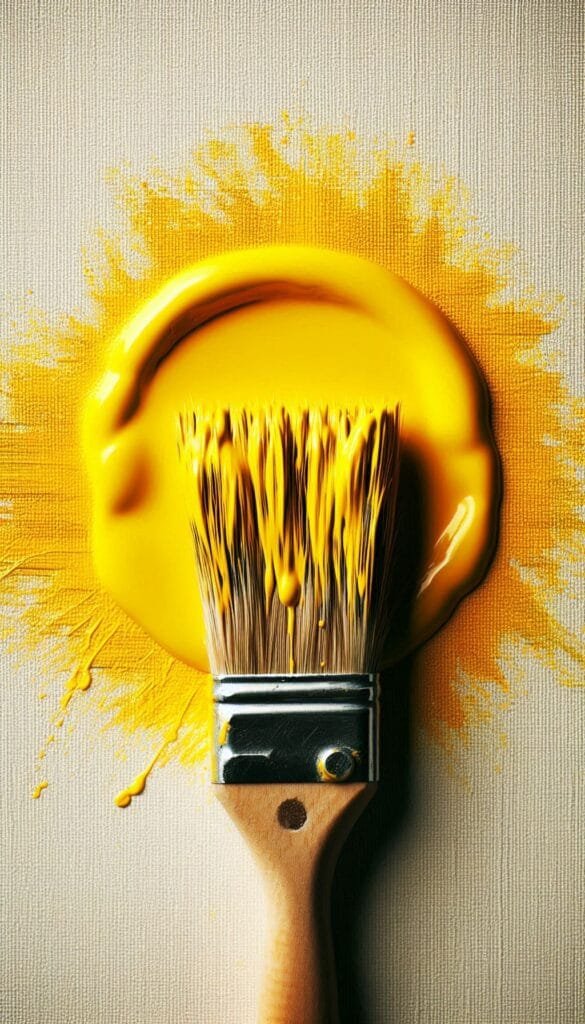Introduction to Innovative
Mithila paints, originating from the Mithila region in the state of Bihar, India, are intricate and vibrant works of art that carry great historical and cultural significance. Reflecting the rich traditions of the region, these artworks are predominantly created by women, showcasing their creativity and skills passed down through generations. The origins of Mithila painting can be traced back to the ancient practices of the Mithila community, where walls and floors of households were decorated during festivals and special occasions, creating a tapestry of narratives that enrich cultural identity.
The traditional methods used in Mithila painting involve natural materials, where artisans employ a variety of ingredients to develop their hues. Commonly used elements include locally sourced pigments derived from plants, minerals, and earth. The brushes are often made from twigs or bamboo, enhancing the organic feel of the artworks. This penchant for natural materials not only underscores a commitment to eco-friendly practices but also imbues every piece with a sense of authenticity and connection to the environment.
The themes depicted in Mithila art are diverse and often revolve around narratives from Hindu mythology, daily life, folklore, and themes of nature. Geometric patterns, vibrant colors, and intricate detailing characterize these pieces, reflecting the artists’ interpretations and emotions. The artwork is typically drawn in a highly stylized manner, where each element serves a symbolic purpose, inviting viewers into the deeper meanings woven through the designs. Through this unique form of expression, Mithila paints serve as a cultural narrative, preserving the heritage and stories of the Mithila region.
The Materials You Need
Mithila painting, an ancient art form originating from the Mithila region of India, is known for its vibrant colors and intricate designs. To effectively embark on a Mithila paint project, you will need specific materials that are not only conducive to the art form but also help in preserving its traditional essence. The primary materials required include various types of paints, brushes, and surfaces. Historically, Mithila artists often used natural dyes derived from plants, minerals, and other organic materials, which contributed to the unique color palette characteristic of this genre.
For the paints, opt for natural pigments such as indigo, turmeric, and madder, which offer rich and vivid colors while remaining environmentally friendly. While many modern artists may use synthetic colors for convenience, utilizing organic ingredients ensures authenticity and depth in your artwork. When it comes to brushes, traditional Mithila artisans typically favor fine-tipped brushes that allow for detailed work. A variety of sizes is essential as the complexity of Mithila designs often requires both precision and broader strokes.
Surfaces for Mithila painting range from handmade paper to walls, cloth, and canvas. Using locally sourced materials not only supports local businesses but also enhances the overall authenticity of your work. When considering your surface, ensure it is absorbent enough to hold the paint while remaining sturdy to withstand multiple painting sessions. For sourcing these materials, visiting local craft stores or artisan markets can be a fruitful approach. Many communities offer biodegradable and sustainable options that are integral to the art form, allowing you to connect with the cultural heritage of Mithila painting while creating your own unique piece.

Simple DIY Mithila Art Techniques
Mithila art, also known as Madhubani painting, is a traditional form originating from the Mithila region of Bihar, India. Its intricate patterns and vibrant colors make it a captivating medium for artistic expression. For beginners eager to explore this art form, a few simple techniques can serve as a gateway to creative projects.
To start your journey in Mithila art, gather necessary materials such as handmade paper, watercolors or acrylic paints, fine brushes, and black ink. Begin with sketching basic patterns on paper. Traditional Mithila designs often incorporate motifs like flowers, animals, and geometric shapes. Using a pencil, lightly outline your chosen theme, ensuring ample space to elevate your artwork.
Once the sketch is complete, the next step involves the application of colors. Mithila art is characterized by its vivid color palette. Select colors that resonate with traditional practices, such as reds, yellows, and greens, and apply them using a brush technique known as ‘dot-and-dash’. This technique creates texture while helping to maintain the integrity of the traditional motifs.
After painting, you can enrich your piece further by incorporating fine black outlines around your colored shapes. A small brush dipped in black ink will yield precise, clean lines that enhance the details of your artwork. This step mirrors the method used by experienced Mithila artisans, reinforcing the aesthetic values of the craft.
Finally, to personalize your Mithila creation, you can introduce your unique elements, such as individual symbols or favorite color combinations. The key is to respect the traditional forms while allowing room for personal expression. By following these straightforward techniques, you can create your unique Mithila art piece that celebrates this rich cultural heritage.
Mithila Wall Painting Projects
Mithila painting, a traditional form of art originating from the Mithila region of Bihar, India, has transcended its origins to become a vibrant medium for artistic expression on various surfaces, particularly walls. These projects can transform dull walls into captivating canvases that reflect intricate themes from nature, mythology, and the essence of daily life. When embarking on a Mithila wall painting project, it’s essential to carefully plan the theme and scale, ensuring it resonates with the surrounding environment.
To begin, selecting a suitable theme is crucial for achieving cohesion within the space. Nature-themed murals can incorporate motifs such as flora and fauna, symbolizing harmony and connection with the environment. Mythological themes, depicting deities and legends, invite a sense of spirituality and cultural identity into the home. Additionally, illustrating scenes of daily life can evoke fond memories and serve as a tribute to tradition.
Preparation of the wall surface is a vital step in the execution of these projects. Start by ensuring the wall is clean, dry, and smooth. This may involve sanding or washing the surface to remove any debris or flaking paint. Utilizing a suitable primer can help in enhancing the paint’s adherence and vibrancy, further supporting the longevity of the artwork, especially in outdoor environments.
In terms of maintenance, it is advisable to choose weather-resistant paints to withstand the elements, especially for exterior wall paintings. Regular inspections for wear and tear will help preserve the integrity of the artwork, while gentle cleaning can prevent the accumulation of dirt and grime. Through meticulous planning, execution, and maintenance, Mithila wall painting projects can breathe life into spaces, showcasing the timeless beauty of this unique art form.
Crafting Mithila-Inspired Home Decors
Mithila art, renowned for its intricate patterns and vibrant colors, offers vast potential for creating unique home decors items that resonate with cultural heritage while enhancing modern aesthetics. Incorporating this traditional Indian art form into your living spaces can personalize and transform ordinary environments into extraordinary displays of creativity and craftsmanship. Here are several ideas for small projects that encapsulate the spirit of Mithila art.
One of the most accessible ways to integrate Mithila art into your home decors is through decorative wall hangings. These can be crafted using canvas, fabric, or even handmade paper. Utilize traditional motifs, such as peacocks, trees, and floral designs, to create a stunning visual narrative. By selecting colors that complement your existing decors, you can achieve cohesion while celebrating the spirited essence of Mithila painting.
Textiles are another excellent medium for introducing Mithila artistry into your home. Consider hand-painted pillow covers, table runners, or curtains that draw inspiration from the vibrant color palette characteristic of Mithila paintings. Such textiles not only provide a tactile element to your decors but also infuse each room with an inviting warmth. Furthermore, they can become excellent conversation starters, sparking discussions about the cultural significance of this art.
Additionally, furniture design can see a refreshing transformation through Mithila patterns. Applying these designs on the surfaces of tables, chairs, or cabinets can create striking focal points in any room. For those who may be hesitant to paint directly on furniture, decoupage methods using Mithila-printed paper can be a viable alternative, allowing for flexibility while maintaining the artwork’s integrity.
In conclusion, emphasizing Mithila art in the realm of home decors not only revives traditional crafts but also merges them with contemporary styles, creating a personal touch that speaks volumes about cultural appreciation and individual creativity.

Collaborative Community Projects
Collaborative Mithila painting projects offer a unique opportunity to unite communities through artistic expression. By bringing together individuals of diverse backgrounds, these initiatives can foster a sense of belonging and cultural pride. Initiating community workshops is an effective first step. In these workshops, skilled Mithila artists can share their techniques, history, and stories, encouraging participants to engage with this traditional art form. These sessions not only enhance participants’ skills but also cultivate an understanding and appreciation of Mithila culture.
Public art installations serve as another impactful method to enhance community engagement. Large-scale murals or collective canvases that reflect local stories and shared experiences can be created, allowing community members to contribute their artistic interpretations of Mithila themes. This not only beautifies public spaces but also reinforces cultural ties and serves as a visual testament to the community’s collective identity. Such installations act as conversation starters, drawing attention to the significance of Mithila traditions and encouraging visitors to explore the rich heritage in more depth.
In addition to workshops and installations, educational programs focused on Mithila culture can be invaluable for both younger generations and adults alike. Schools and local organizations can collaborate to develop curricula that incorporate Mithila painting techniques, as well as the historical context and stories behind the art. Engaging children in cultural learning through art can cultivate a lasting interest in their heritage, which is crucial for the preservation of Mithila traditions.
Ultimately, the impact of these collaborative projects extends beyond simple artistic endeavors; they play a crucial role in building community bonds and fostering cultural preservation. By participating in Mithila painting activities, individuals contribute to a collective narrative, enriching their community’s cultural landscape for future generations.
Incorporating Mithila Art in Education
Mithila painting, a traditional art form originating from the Mithila region of India, offers a unique opportunity for educators to enrich art education while imparting cultural knowledge. By integrating Mithila art into classroom projects, teachers can create engaging learning experiences that promote creativity and an appreciation for cultural diversity. The vibrant colors and intricate patterns of Mithila paintings can inspire students to explore their artistic abilities while gaining insights into the history and significance of this form of art.
One effective approach could involve using Mithila art to teach students about cultural history. Educators can provide context regarding how this art form has been passed down through generations, often reflecting the daily lives, mythology, and societal rituals of the Mithila community. This historical perspective can encourage students to engage in discussions about the role of art in cultural identities, allowing them to appreciate different cultures and artistic expressions.
In terms of practical application, teachers can organize hands-on projects that allow students to create their own Mithila-inspired artworks. This could include using traditional techniques such as natural dyes and locally sourced materials to replicate the rich textures and designs characteristic of Mithila painting. Providing students with a variety of resources—such as books, online tutorials, and artwork examples—can facilitate a deeper understanding of the methods involved in this art form.
Additionally, collaborative classroom projects can foster teamwork and creativity. For instance, students can work together to create a large mural that incorporates elements of Mithila art, infusing their personal narratives into the artwork. Such exercises not only enhance artistic skills but also promote teamwork and communication among students, preparing them for future collaborative endeavors.
By incorporating Mithila art into educational settings, teachers can cultivate both art appreciation and cultural awareness, offering students an enriching and multidimensional learning experience.
Sustainability in Mithila Paints
Mithila painting, an ancient art form originating from the Mithila region of India, is not only celebrated for its vivid aesthetics but also for its potential sustainability practices. Central to this artistic tradition is the use of natural materials sourced from the local environment, which promotes a symbiotic relationship with nature. Artists often rely on natural pigments derived from minerals, plant extracts, and organic materials, ensuring that their work minimizes harmful environmental impacts.
The traditional tools used in Mithila painting, such as brushes made from twigs and natural fibers, further emphasize eco-friendliness. By utilizing locally available resources, artists reduce their carbon footprint and contribute to sustainable livelihoods within their communities. Moreover, the reliance on biodegradable and naturally sourced materials fosters eco-consciousness, making Mithila painting an exemplary model for modern artists seeking to embrace sustainability.
To maintain sustainability in Mithila painting, it is vital for artists to adopt best practices that prioritize environmental protection. One effective technique is to use homemade paints created from organic substances like turmeric, indigo, and clay. This not only enhances the vitality of the artwork but also reduces dependency on synthetic options that can be detrimental to both health and the environment. Furthermore, artists should aim to limit water usage, opting for eco-friendly cleaning methods that safeguard local water resources.
Preserving natural resources while engaging in Mithila painting is not merely an aesthetic choice; it is a responsibility that artists must embrace. By incorporating sustainable sourcing practices, artists contribute to the ongoing heritage of Mithila art while ensuring the planet’s health for future generations. Thus, the integration of ecological considerations into the Mithila painting process exemplifies a harmonious balance between creativity and environmental stewardship.
Showcase: Inspiring Mithila Artists
Mithila art, with its intricate patterns and vivid colors, has a long-standing tradition rooted in the Mithila region of Bihar, India. Several artists are dedicated to preserving this rich cultural heritage while infusing contemporary themes into their work. These artists not only celebrate traditional motifs but also address modern societal issues, bridging the gap between past and present. Their innovative projects function as a canvas for expressing their thoughts and ideas, inviting viewers to explore deeper narratives within the vibrant strokes of Mithila paintings.
One such artist is Sita Devi, often hailed as the pioneer of Mithila painting. Her work emphasizes traditional subjects, folklore, and nature, yet she seamlessly integrates contemporary symbols and themes. Sita has made significant contributions to promoting Mithila art globally, and her workshops educate younger generations about techniques and narratives integral to this art form. She believes in fostering cultural pride and encouraging youth to adopt traditional art forms while allowing them the creative freedom to innovate.
Another notable figure is Ganesh Kumar, who is known for merging Mithila art with modern-day themes such as environmental consciousness. His paintings often depict the delicate interconnection between nature and human actions, offering both a stunning visual experience and a poignant commentary on contemporary issues. In his interviews, Kumar emphasizes the importance of sustainable practices in art, showcasing how Mithila painting can play a role in ecological awareness.
Furthermore, artists like Pushpa Kumari are redefining gender roles in the Mithila art community. Kumari’s work reflects her personal journey and the empowerment of women, using vibrant colors and bold designs to capture the essence of female strength and resilience. Her approach not only preserves tradition but also promotes a dialogue on women’s issues, making her an influential voice in the Mithila art scene.
These inspiring artists exemplify how Mithila art transcends mere aesthetics, turning into a powerful medium for storytelling, education, and social change. Their combined efforts ensure that the tradition remains relevant, vibrant, and alive in today’s cultural landscape.


